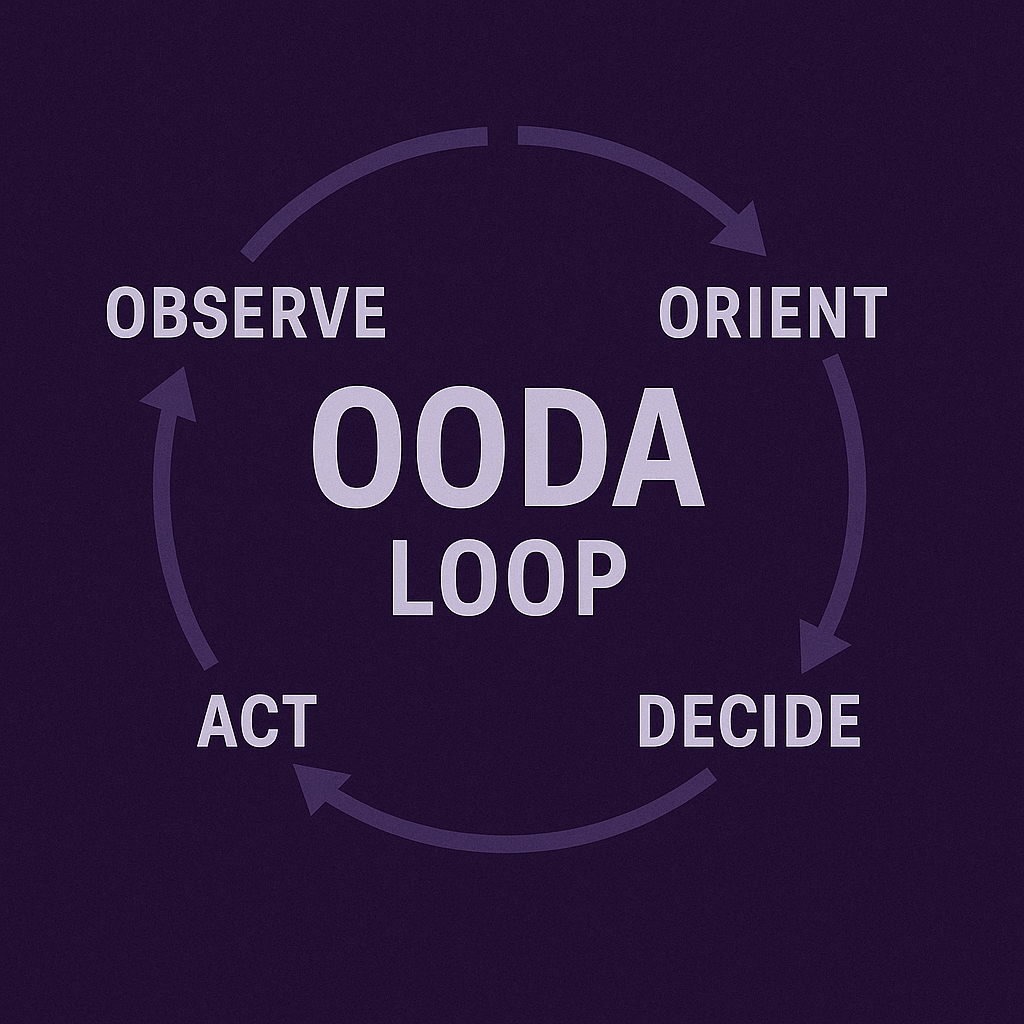
TL;DR: OODA (Observe–Orient–Decide–Act) is a weekly rhythm for reality-based leadership. Review signals, align on meaning, make one-way vs two-way calls explicit, then act and learn. It shortens feedback cycles and reduces thrash.
Why reflection matters more than ever
In today’s fast-evolving organisations, reflection is not a luxury, it is a leadership discipline. How else do we learn from our mistakes and those of others? We reflect and adapt.
Senior executives face constant pressure to decide swiftly and influence change while maintaining trust and alignment. They need to explore new opportunities, align teams, support and empower. Many will struggle to make use of models that simply do not match the complexity of their operating environment or their understanding.
Kolb’s experiential learning cycle, while foundational in learning theory, can lack the responsiveness required in more volatile environments. As Ryder and Downs (2022) argues in their reassessment of reflective practice, we need a more adaptive, feedback-rich, and context-sensitive approach.
Something seemingly simpler, and yet as adept at managing volatility, uncertainty, complexity and ambiguity is required.
Enter into the OODA Loop, and learn why, there is "No way out," and that is okay.
What is the OODA Loop?
Colonel John Boyd, a U.S. Air Force strategist and fighter pilot, developed the OODA Loop. Observe, Orient, Decide, Act, is a decision-making model for analysing aerial combat. However, its real power lies beyond the battlefield. Like any good framework, it is a thinking model and it empowers adaptive leadership under pressure. Boyd described this loop not as a sequence, but as a dynamic recurring cycle, one that must continuously adjust to new information and changing conditions.
"The ability to operate inside the decision cycle of others is the essence of strategic advantage." John Boyd
A Leadership Reflection Framework Based on the OODA Loop
This approach offers executives a way to continuously improve both awareness and action. It integrates insights from the article by Ryder and Downs (2022), who highlight the potential of Boyd's thinking to reshape reflective learning.
Focus: Situational awareness
"The problem with situational awareness is you don't realise you lost it until you get it back." Anon Pilot
Reflection tip: Create a short daily or weekly observational log focused on events, interactions, and emotional responses.
Focus: Interpretation and sense-making of what you know, or do not.
This is the heart of the model. Orientation reflects your worldview and deeply affects what options seem available. Be prepared to challenge your mental models. Remember that your competition will exploit any weakness you provide them.
Focus: Choice and intention
Consider whether your choice is designed to learn and grow, or to control. Adaptive leaders embrace test-and-learn cycles over rigid adherence to their plan.
Focus: Execution and feedback
Leadership reflection should not end with action. Instead, feed it back into the next loop to build continuous learning and responsiveness.
How this helps executive teams
Unlike more linear reflection models, the OODA-inspired framework mirrors how leaders at every level actually think and behave in high-velocity contexts. It supports:
As Boyd noted, those who adapt their orientation faster than others create not just efficiency, but advantage.
From ‘after-action review’ to ‘constant-course correction’ and adjustment
Modern leadership is not about having the right answer—it is about staying reflective, situationally aware, and oriented toward learning. Adopting Boyd’s OODA-based approach supports this at both the individual and team level.
Reflection, then, is not a break from leadership. It is leadership.